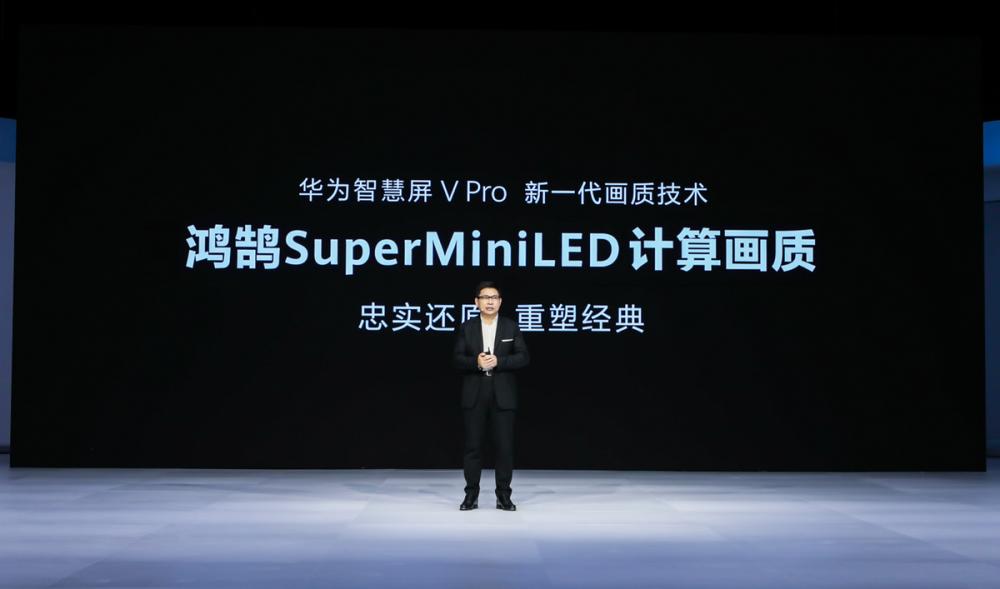When the development of smart TVs encountered bottlenecks, in 2019, Huawei launched a "smart screen" to innovate the form of TV large-screen products. According to incomplete statistics, Changhong, Glory, Haier, Suning and other manufacturers have followed and launched the "smart screen" category. The "2020 Smart Screen White Paper" said that "smart screen" has become a new bright spot in the field of TV consumption. The industry believes that the smart screen is the starting point of "TV Industry 3.0" and represents the future trend of TV.

At the same time, the consumption upgrade of the TV large screen to the smart screen evolution also requires various machine manufacturers to establish an industrial consensus and unite the industrial supply chain, including panels, chips, modules, accessories and other manufacturers to jointly accelerate technological innovation and product iteration to meet the increasingly stringent product needs of consumers. On April 28, Huawei held a new product launch conference and launched the Huawei Smart Screen V Pro. Powered by next-generation image quality technology, both 4K HDR and low-resolution sources deliver a super-sensory experience that goes beyond the content itself. As Yu Chengdong said, "a new generation of picture quality technology, good TV does not pick the source of the film." Huawei's smart screen V Pro also relies on Honghu SuperMiniLED and computing picture quality technology to continue to expand new tracks in terms of TV picture quality upgrades, leading the industry to upgrade.
Honghu SuperMiniLED: Take the lead in the MiniLED tide
Compared with the most common traditional LCD display on the market, the number and density of chips behind the MiniLED display are larger, the picture quality is more vivid, and the display screen can be presented with more detail. The industry believes that MiniLED technology has great potential to iterate on existing display technologies. The MiniLED backlight market size is expected to reach approximately $1.1 billion by 2023.
In the tide of major giants scrambling to lay out MiniLED, last year Huawei launched the Huawei Smart Screen V 75 Super equipped with Huawei's self-developed Honghu SuperMiniLED precision matrix backlighting solution. Huawei's Smart Screen V Pro inherits the advantages of Honghu SuperMiniLED technology, combines with clear light control PRO technology to bring ultra-high contrast, and supports up to 1000nit HDR peak brightness, presenting realistic and bright details, and more realistic restoration of natural colors. The release of Huawei's smart screen V Pro will not only continue to consolidate Huawei's technical advantages in the field of adopting MiniLED, but also promote the landing of MiniLED products from more manufacturers in the industry. In the future, the large-screen display industry will surely set off a MiniLED boom.
Computational image quality: Empowering classic images with AI technology
In terms of 4K and HDR film source performance, Huawei's Smart Screen V Pro's Honghu SuperMiniLED has advantages, making the color more accurate, the picture more layered and more realistic. However, some old movies and TV series, due to the limitations of the shooting equipment at that time, the source resolution is low, and the color is dim, or SDR pictures. Huawei's smart screen not only applies the TV's super AI computing power to the software's intelligent experience, but also helps improve the image quality of AI technology, bringing the industry-leading "computing picture quality" technology. In this era of "computing is king", computing power will become a watershed for high-end TV.
Based on the super AI computing power of the smart screen's own neural network processor (NPU), Huawei's Smart Screen V Pro analyzes the objects in the screen in real time. Due to the deep learning training of massive data, it can intelligently perceive and dynamically optimize the pictures seen like the human brain, intelligently reshape the texture details of low-resolution pictures, repair the edge outlines of objects and text, and make the picture light and dark contrast of SDR content more intense, the colors richer, and the color transition smoother. Many low-resolution content of 1080P and below from old film sources can greatly improve the clarity of the picture under the blessing of computing image quality and achieve a picture quality performance close to 4K resolution.
The computational quality of Huawei's smart screen next-generation picture quality technology provides users with a high-quality picture quality feast of "no picking film source". This also breaks the status quo of "heavy hardware, light software" of screen display technology in the TV large-screen industry, allowing manufacturers to attach importance to the construction and investment of AI technology. In this process, it not only opens up a new development direction for TV manufacturers, but also benefits all consumers.
The release of Huawei's smart screen V Pro brings a strong competitiveness of "faithful restoration and reshaping classics". The Huawei Smart Screen V Pro is also the world's first TV device that has passed the dual certification of HDR Vivid and Audio Vivid, which also proves that Huawei's smart screen is not only excellent in "smart" products, but also assumes the identity of the image quality ecological enabler, not only helping China's independent ultra-high-definition audio and video standards to go to the world, but also using the forward-looking "no computing, no high-end" concept to lead the TV large-screen industry into a better future.